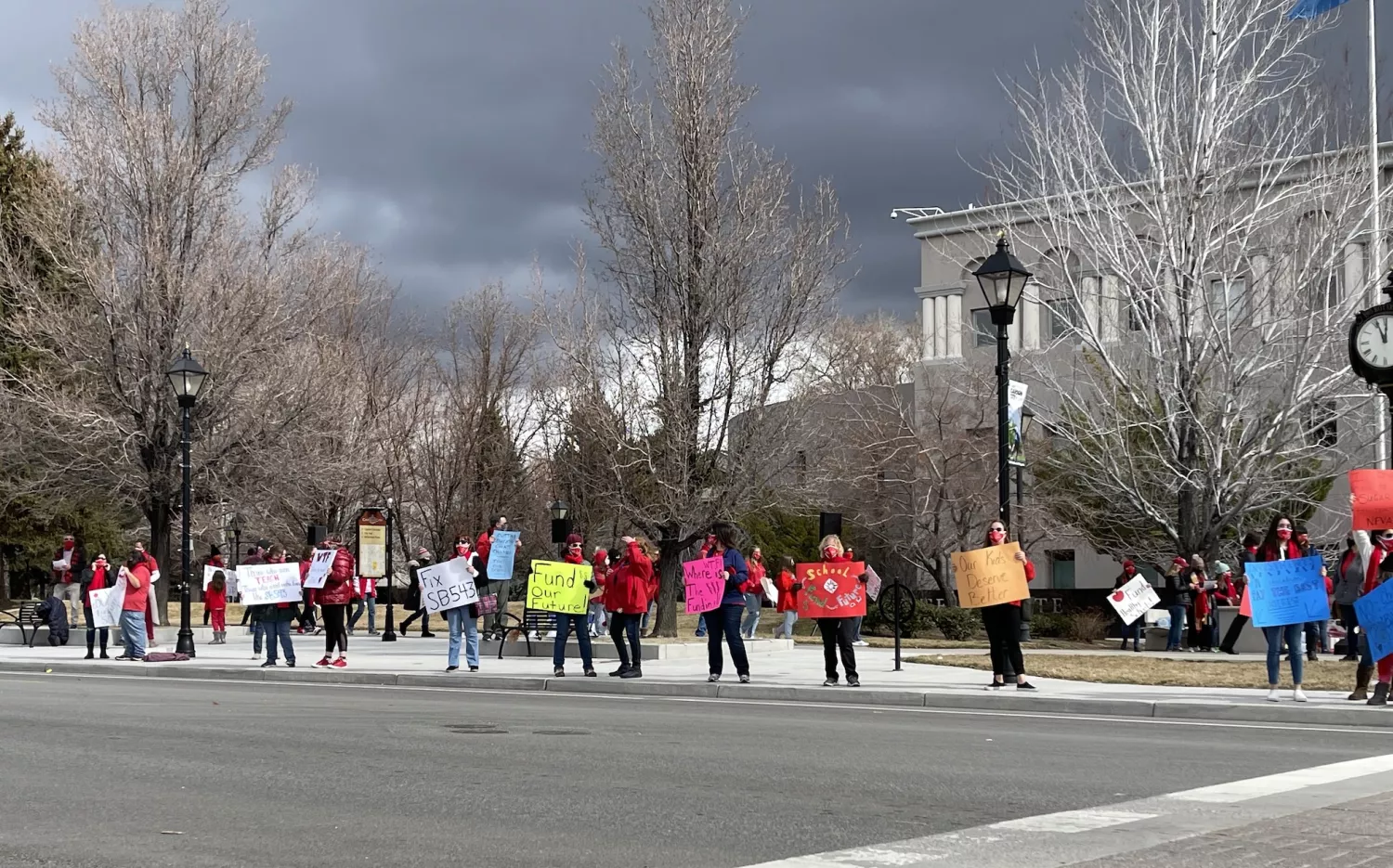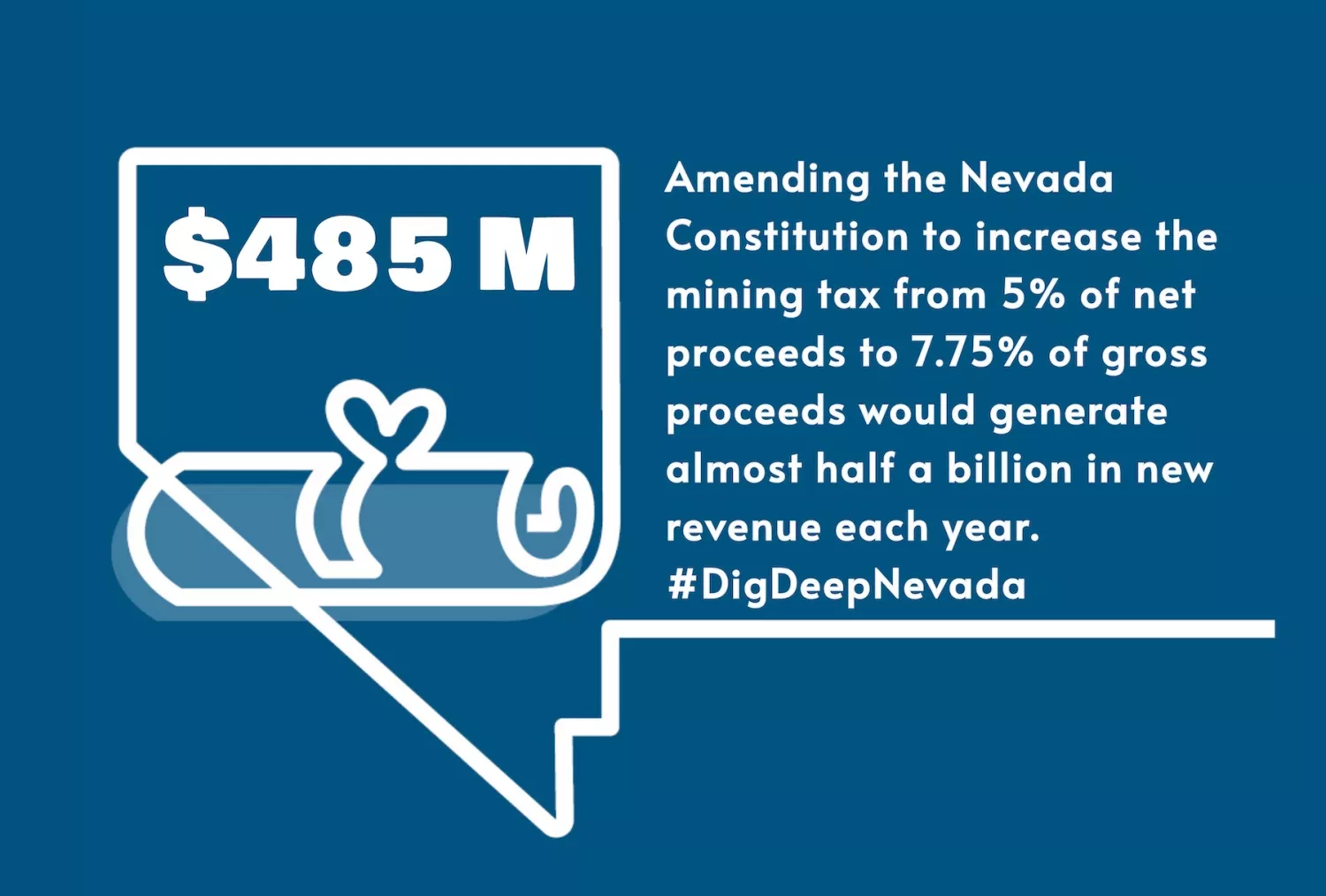
Yesterday, hundreds of educators in red scarves and face coverings were back in Carson City, lining both sides of the street from the Legislative building to the Capitol to bring attention to education funding.
After sustaining difficult cuts last summer, K12 public education is threatened with another devastating hit—$156 million in cuts over the biennium to class size reduction means more overcrowded classrooms even with the largest class sizes in the nation now. Additionally, a reduction in per-pupil funding moves education in Nevada the wrong way.
Federal emergency relief funds will address the impact of the COVID-19 pandemic to safely open and operate school buildings over the next year and a half. However, we know these funds will only serve as a temporary patch. Uses of funds are restricted, so they can’t be used to backfill proposed cuts. Before the pandemic, Nevada ranked near the bottom of states in most education metrics.
Federal emergency relief does nothing to address this structural deficit.
Since the introduction of SB543, NSEA has expressed policy concerns about the new school funding plan—the lack of educator voice; no new revenue for our chronically underfunded schools; watering down of our model education equity programs, Zoom and Victory schools; freezing and squeezing most school district budgets for a period of years; a giveaway to charter schools without increased accountability, and rewriting the rules of collective bargaining to make it nearly impossible for education unions to win a raise at the bargaining table.
Now the Governor’s proposal to phase implementation of SB543 raises a slew of new questions. A month after its introduction, we still don’t know the impact on individual school districts. Will there be yet another round of new winners and losers? Under the Nevada Plan, the state provides a basic support guarantee for every Nevada student, as required by the Constitution. Under the phased approach local revenues are excluded from this calculation, cutting the state guarantee in half to under $3000 per pupil. What will be the impact on our schools if local revenues are less than anticipated?
NSEA maintains it is completely irresponsible to effectuate a radical shift in the state’s education funding formula amidst a global pandemic, especially as further general fund cuts are proposed for our schools. This is even more true with the late hour changes proposed by the Governor. Given all these challenges, we believe the only responsible course of action is to delay SB543 until after the pandemic, while we are able to work together on optimal funding and the revenue plan to get us there.

Nevada needs new, ongoing state revenue. NSEA asks legislators to dig deep to find the political will to place AJR1 on the ballot. AJR1 would generate $485 million in new revenue for Nevada annually. While only a part of what is needed for our educators and students, we see it as a critical step toward building a funding plan to achieve optimal education funding.
